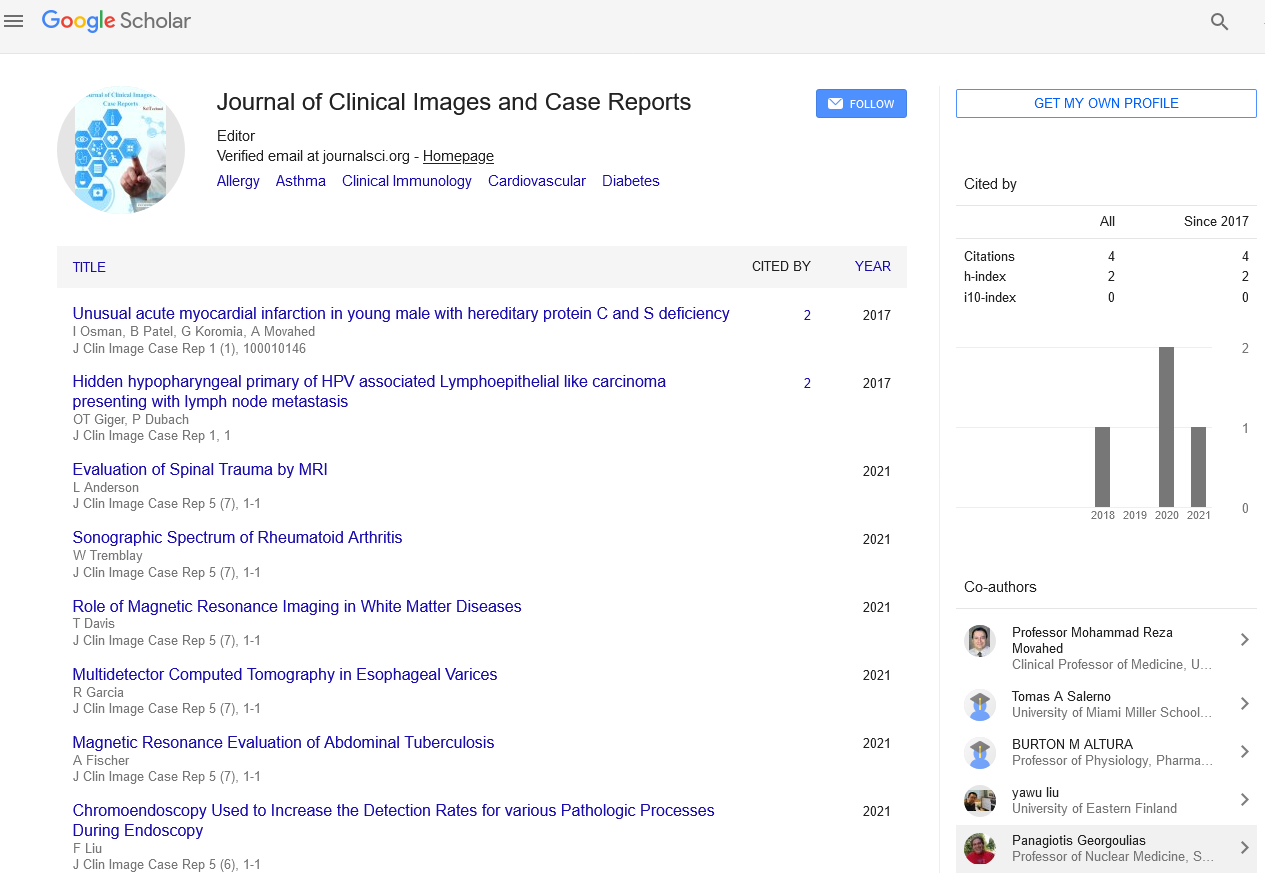Commentary, J Clin Image Case Rep Vol: 8 Issue: 5
Examining the Immune Response in Pediatric Sepsis
Miura Dou*
1Department of Pediatrics, St. Marianna University School of Medicine, Kawasaki, Japan
*Corresponding Author: Miura Dou,
Department of Pediatrics, St. Marianna
University School of Medicine, Kawasaki, Japan
E-mail: doumiura@gmail.com
Received date: 25 September, 2024, Manuscript No. CICR-24-153598;
Editor assigned date: 27 September, 2024, PreQC No. CICR-24-153598 (PQ);
Reviewed date: 11 October, 2024, QC No. CICR-24-153598;
Revised date: 18 October, 2024, Manuscript No. CICR-24-153598 (R);
Published date: 25 October, 2024, DOI: 10.4172/CICR.1000329
Citation: Dou M (2024) Examining the Immune Response in Pediatric Sepsis. J Clin Image Case Rep 8:5.
Description
Sepsis is a life-threatening condition caused by an infection that leads to widespread inflammation throughout the body. In children, sepsis can rapidly progress and lead to organ failure, shock and, in severe cases, death. The immune system plays a difficult role in both the development and resolution of sepsis. In pediatric patients, the immune response is often different from that of adults and understanding these differences is key to improving treatment strategies and outcomes.
Sepsis in children often begins with an infection that triggers an exaggerated immune response. The immune system is designed to protect the body from infections by detecting and fighting off harmful pathogens. In cases of sepsis, however, the body's immune response becomes dysregulated. The immune system’s normal protective mechanisms become overstimulated, leading to systemic inflammation that can harm the body's own tissues and organs.
Children's immune systems are unique and continue to develop throughout childhood, making them more vulnerable to infections. In neonates and infants, the immune response is not yet fully matured and they may be at higher risk of severe sepsis. On the other hand, older children have more developed immune systems, but they may still experience an exaggerated inflammatory response that can result in tissue damage and organ dysfunction. The immune response in pediatric sepsis involves both innate immunity (the body’s first line of defense) and adaptive immunity (the more targeted, specific immune response). Dysregulation in either of these arms can lead to complications, making the treatment of pediatric sepsis particularly complex.
Understanding the immune response in pediatric sepsis is difficult for identifying new treatment options. While antibiotics are the cornerstone of sepsis treatment, they only address the infection itself. Addressing the immune system's dysregulated response is also essential to preventing long-term damage. For example, therapies that modulate the immune response such as corticosteroids or cytokine inhibitors are being examined as adjuncts to traditional treatments. However, research is still ongoing to determine the safety and efficacy of such treatments in children.
The early recognition and prompt treatment of sepsis are essential for improving outcomes in pediatric patients. The first step in managing pediatric sepsis is to identify the condition early. Symptoms of sepsis in children can be subtle and may include fever, rapid breathing, lethargy and changes in skin color. Given that these symptoms can overlap with other common pediatric illnesses, healthcare providers need to be vigilant in assessing children who show signs of infection.
Once sepsis is suspected, treatment begins with the rapid administration of broad-spectrum antibiotics to target the underlying infection. In severe cases, intravenous fluids and medications to support blood pressure and organ function may be necessary. Monitoring the immune response is also difficult, as patients may need additional therapies to modulate the inflammatory process or address immune suppression.
Pediatric sepsis is a medical emergency that demands prompt diagnosis and intervention. Understanding the immune response in children with sepsis is essential for improving treatments and outcomes. The immune system’s dysregulated response, including the release of excessive cytokines and impairment of immune function, plays a major role in the development and progression of sepsis. With continued research into the immune mechanisms involved and the development of new therapies, there is hope for more effective treatments and better survival rates for children affected by sepsis. Early detection, appropriate medical intervention and ongoing monitoring are important for improving the prognosis of pediatric sepsis.
 Spanish
Spanish  Chinese
Chinese  Russian
Russian  German
German  French
French  Japanese
Japanese  Portuguese
Portuguese  Hindi
Hindi 